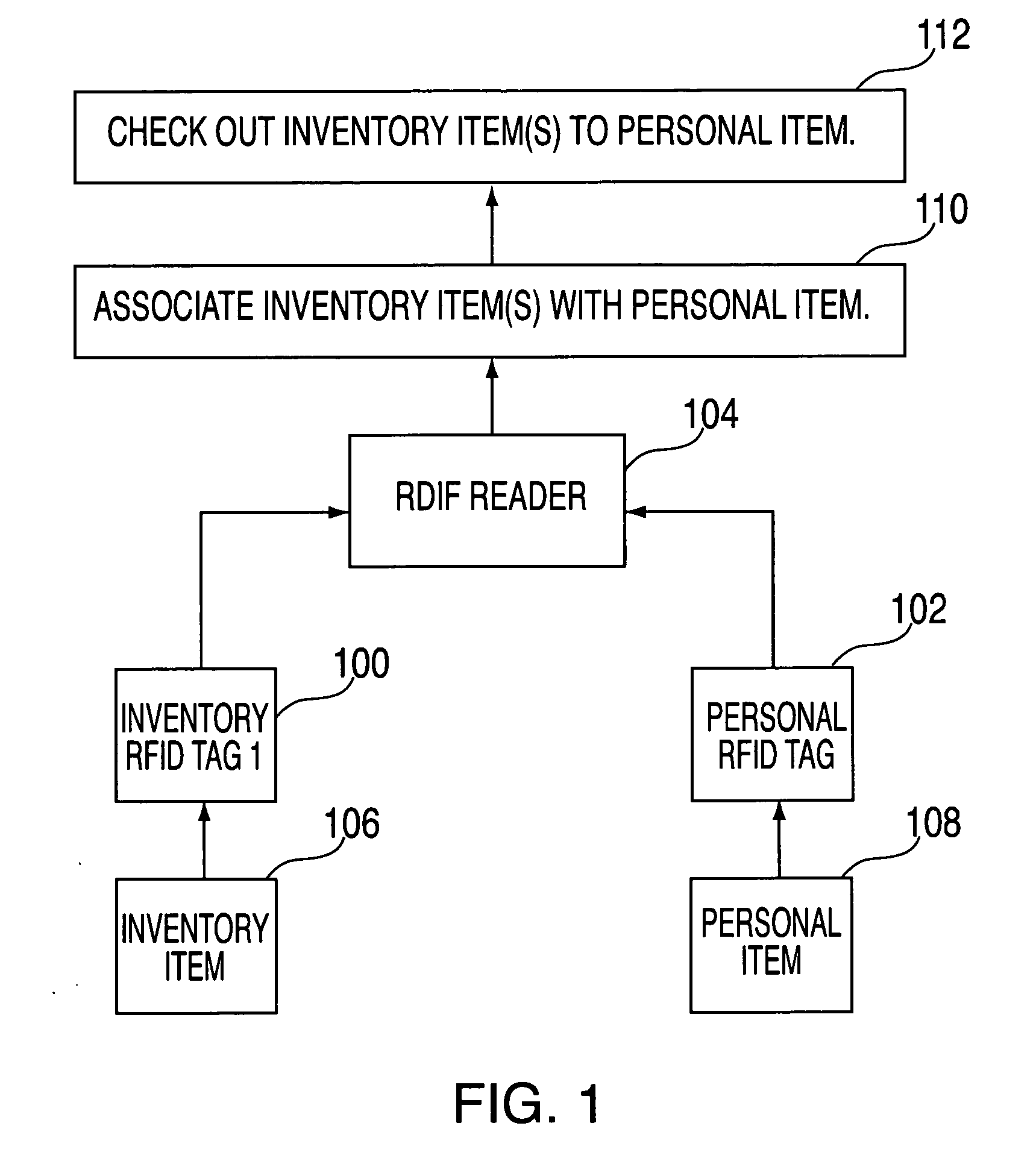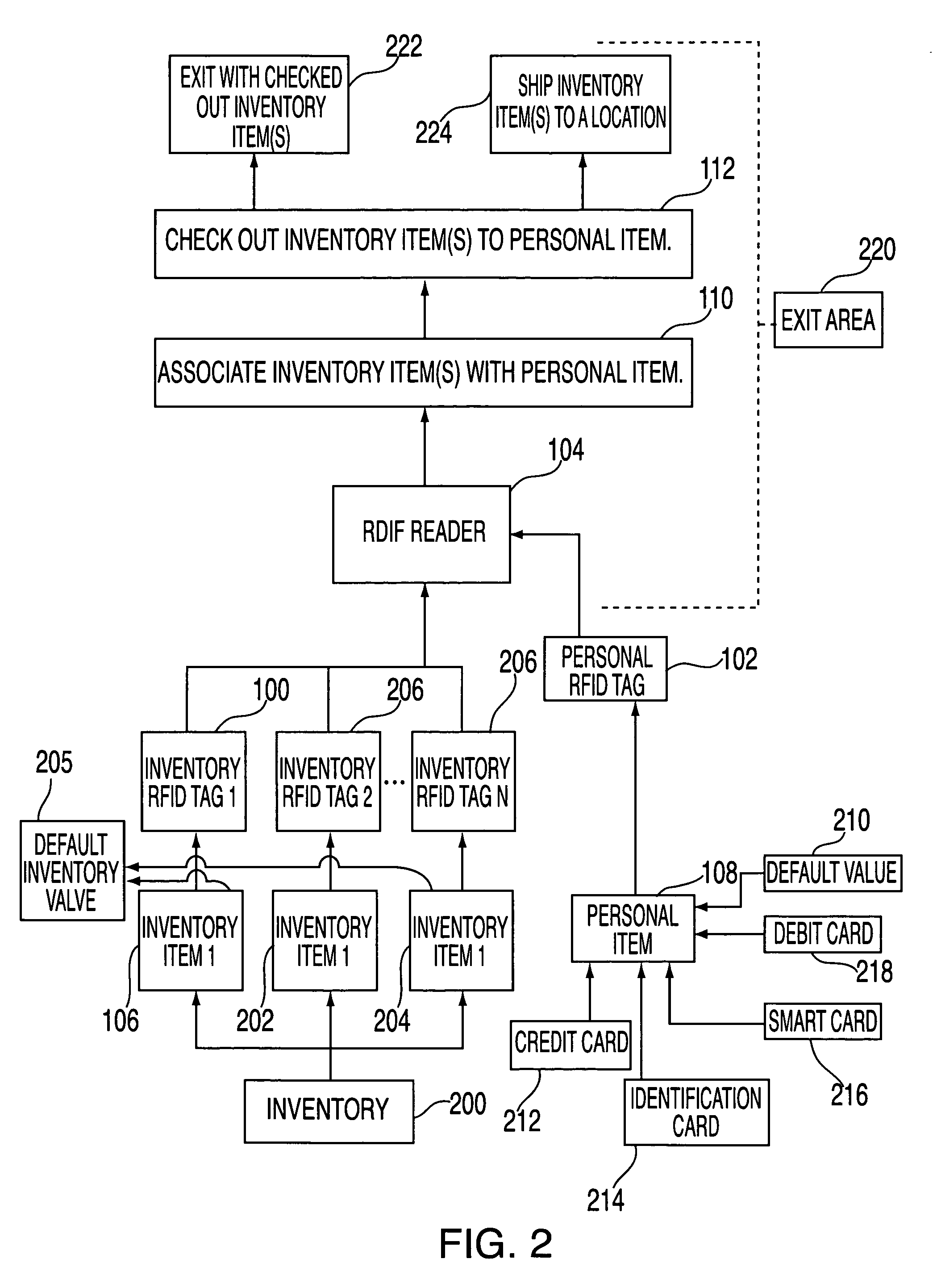Customer interaction with inventory via RFID
a technology of customer interaction and inventory, applied in the field of human interface, inventory, and retail sales, can solve problems such as more expensive systems
- Summary
- Abstract
- Description
- Claims
- Application Information
AI Technical Summary
Benefits of technology
Problems solved by technology
Method used
Image
Examples
Embodiment Construction
[0022]FIG. 1 shows an exemplary method for interaction with inventory. An inventory RFID tag 100 and a personal RFID tag 102 are read by an RFID reader 104. The inventory RFID tag 100 identifies an inventory item 106 and the personal RFID tag 102 identifies a personal item 108. At 110, the inventory item 106 is associated with the personal item 108 and, then at 112, the inventory item 106 is checked-out to the personal item 108.
[0023] Many different kinds of RFID tags 102, RFID readers 104, and other RFID technologies may be used in embodiments of the present invention to operate in shopping carts, cell phones, exit or entry areas of a facility, and in various other ways.
[0024] Various embodiments of the present invention operate, at least in part, according to standards, such as JTC 1 / SC 31 Automatic identification and data capture techniques, JTC 1 / SC 17 Identification Cards and related devices, ISO TC 104 / SC 4 Identification and communication, ISO TC 23 / SC 19 Agricultural elect...
PUM
 Login to View More
Login to View More Abstract
Description
Claims
Application Information
 Login to View More
Login to View More - R&D
- Intellectual Property
- Life Sciences
- Materials
- Tech Scout
- Unparalleled Data Quality
- Higher Quality Content
- 60% Fewer Hallucinations
Browse by: Latest US Patents, China's latest patents, Technical Efficacy Thesaurus, Application Domain, Technology Topic, Popular Technical Reports.
© 2025 PatSnap. All rights reserved.Legal|Privacy policy|Modern Slavery Act Transparency Statement|Sitemap|About US| Contact US: help@patsnap.com



